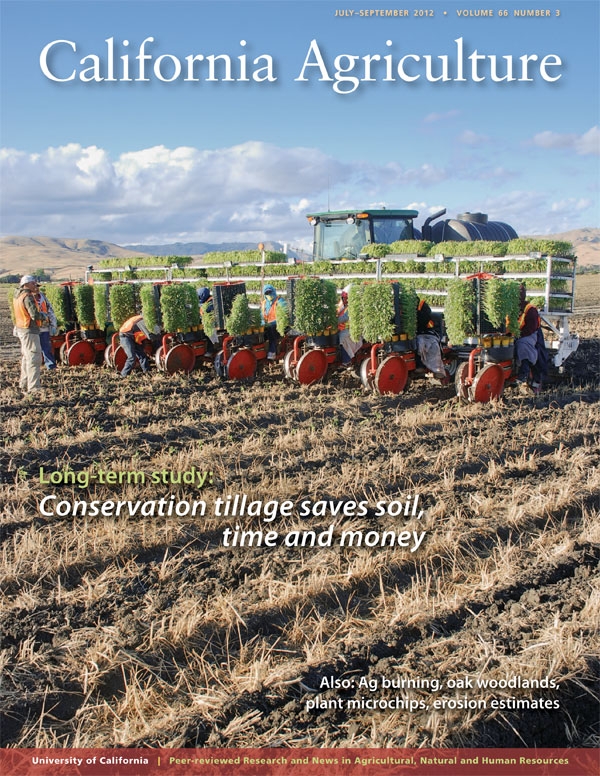
In the Sentinel story, Giacomazzi urged local growers interested in undertaking conservation agriculture systems to map out the practice carefully before they start.
“It’s very important for farmers to learn the entire system of conservation tillage from end to end and to know everything they’re going to do for the whole year before they start doing it,” he said. “A lot of failures happen ... when people don’t think the whole thing through.”
Another result of a news release about the new issue of California Agriculture journal was an editorial in the Porterville Recorder praising conservation systems. In the opinion piece, the editors wrote that they often hear farmers are not good stewards of the environment, "but that just isn't true."
"One shining example of being good stewards is no-till farming, a practice that has been around a couple of decades but one that is growing in acceptance," the editorial said.
Giacomazzi, the Hanford dairyman, is a member of Conservation Agriculture Systems Innovation (CASI), a collaborative effort involving UC, farmers and industry representatives that provides information and support to encourage adoption of conservation agriculture practices in California. He presented the keynote address at an event in January that launched CASI, which is available below: